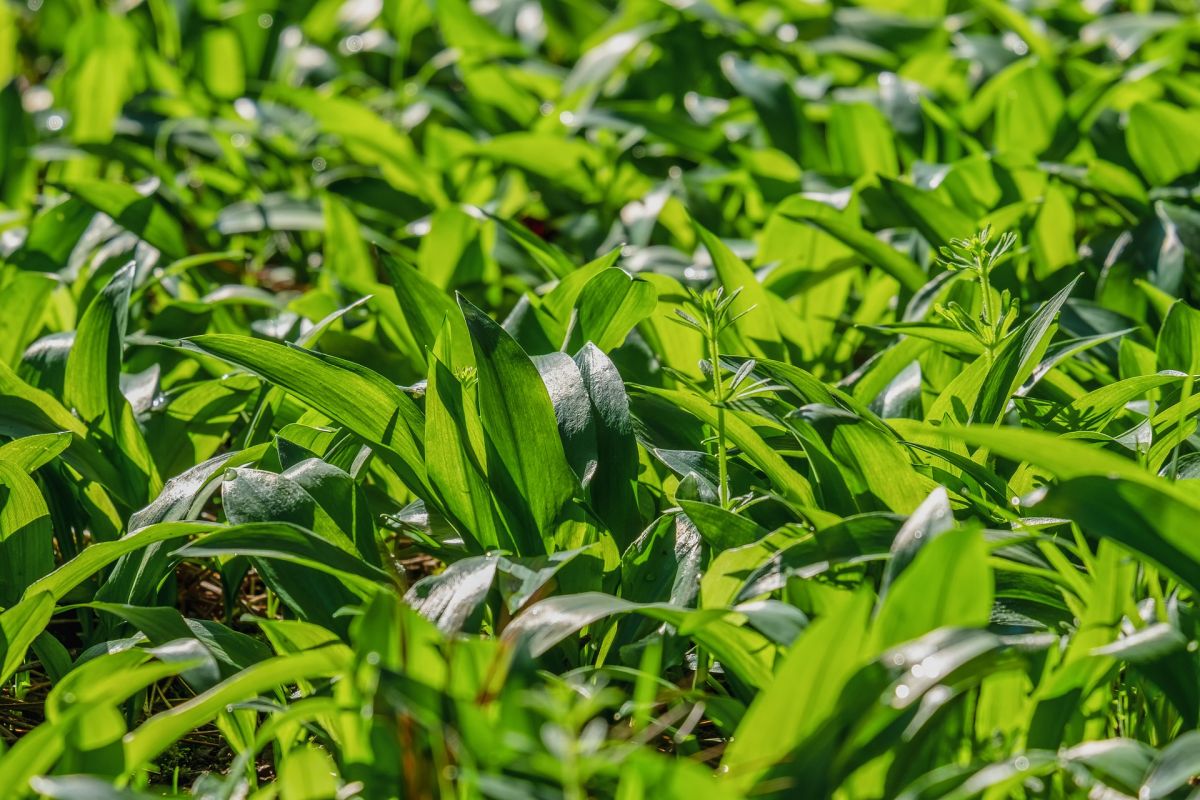Wild garlic and what to do with it

The smell of wild garlic is the scent of spring. You can walk through great swathes of it, missing the green tongue-like leaves until the wind changes.
Foraging
When picking, it’s easy to begin plucking one stem at a time, checking for spots, marks of wear and tear and mud, to then find yourself pulling up handfuls of it, dropping it into a plastic bag with no abandon. As with all foraging, aim to take only what you need.
How to use it
If you find you’ve come away with parcelled handfuls of waxy leaves, here are some ideas to use them up before they go limp and lose their shine.
- Pesto is the obvious choice, blitzed with walnuts, pine nuts or almonds, with equal parts lemon and oil, to give a glossy deep green paste. Grate in lemon zest, nutmeg and parmesan or flake in nutritional yeast. Stir into pasta, use the back of a spoon to spread it over the base of a pizza, toss it over some boiled new potatoes – put it on everything.
- Stirred into beans, cannellini or butter, shredded and tossed. Let it wilt down as you would spinach. Similarly, stir whole leaves into a risotto or a soup in the final stages of cooking, where you might otherwise use chives or any green leafy herb. The residual heat of the pan should take away the bitter edge of rawness, the slight teariness that accompanies chopping an onion.
- Wild garlic butter or oil. Blend the leaves to a pulp in a food processor then beat into butter, or push through a sieve into a bottle of olive oil. Save it in the fridge or slice it into rounds and keep wrapped in greaseproof paper in the freezer. Then brush this over toast at a later date to create an instant garlic bread, or as the base of anything fried, morning eggs, greens of any kind.
- Slice into ribbons and in a large bowl stir in an egg, grated parmesan/nutritional yeast, a little nutmeg, lemon zest, a tablespoon of flour, and a splash of water or milk. Dollop tablespoons into hot oil or foaming butter in a pan, and fry for a couple of minutes on each side.
Where to look
Look for wild garlic on the floor of any shaded, woodland area, often cropping up near bluebells. Look out for Lily of the Valley – with white flowers and leaves similar in shape to wild garlic the two could be easily mistaken. Lily of the Valley has no trace of a garlic or onion smell, so follow your nose.







